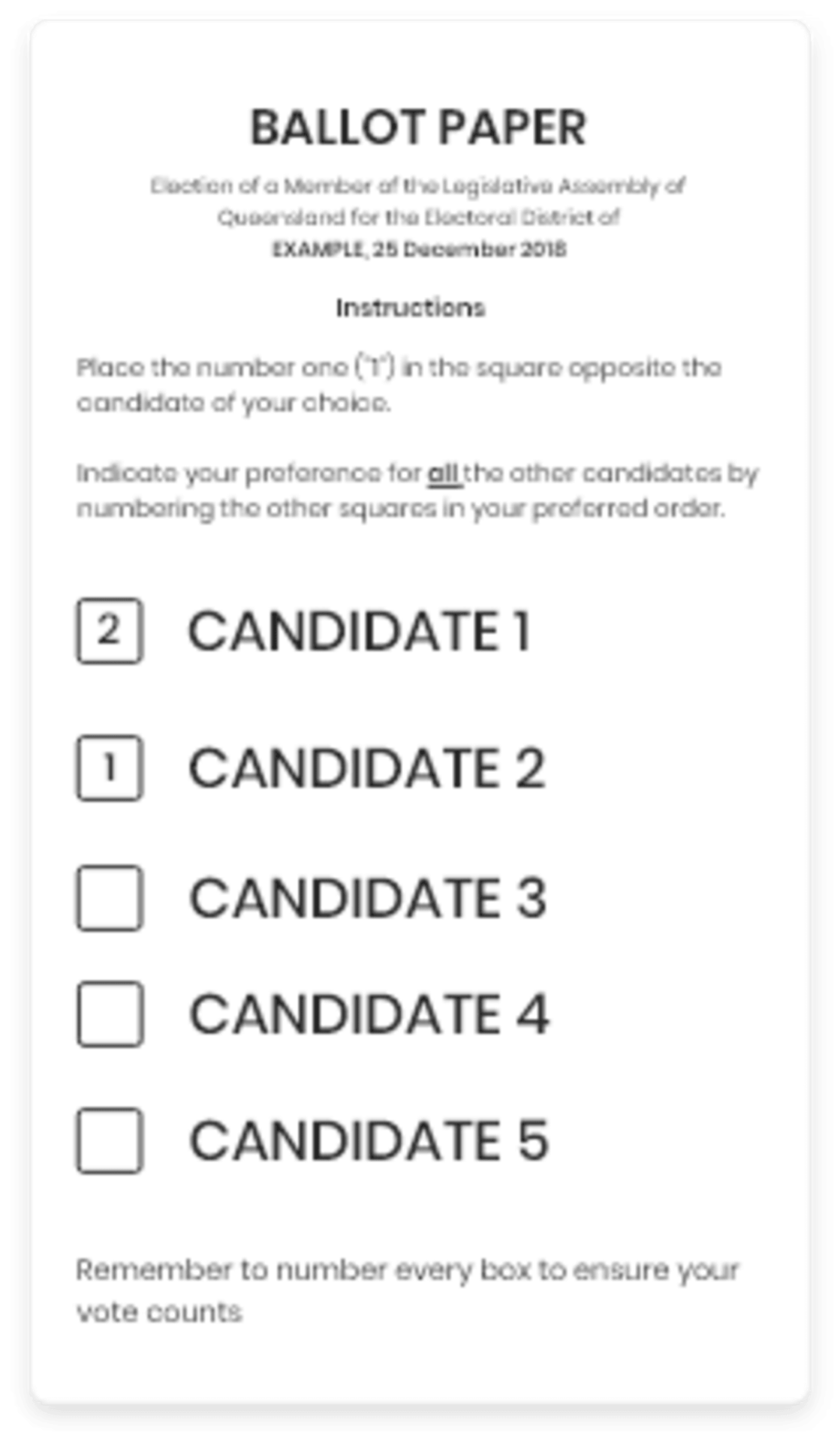The full preferential voting system means that if you vote for a less popular candidate or a smaller party as your first preference, and they do not win, your vote will still be counted towards electing your member.
To vote correctly on the ballot paper, you need to number every box in the order of your choice.
- Write the number 1 in the box next to the candidate who is your first choice.
- Write the number 2 in the box next to the candidate who is your second choice.
- Continue writing the numbers 3, 4, 5, and so on until you have a number in every box.
Informal votes
A ballot paper that has not been filled out correctly is known as an informal vote. Informal votes cannot be counted toward the election result. A ballot paper can be considered informal when someone:
- Puts ticks, crosses, or any other symbol in the boxes
- Does not number enough boxes
- Misses or repeats numbers
- Leaves the ballot paper blank.
Making a mistake
It is okay if you make a mistake on your ballot paper. You can cross it out and put the correct number next to it.
If you are worried the ECQ will not be able to understand your corrections, you can return your ballot paper to the ECQ election staff and ask for a new one.
If you damage or tear your ballot paper, you can return it to the election staff and ask for a new one.
You can also ask for help to fill out your ballot paper.
Your vote is your choice alone
It is important to know that only you can decide who you vote for. Other people can suggest who to vote for but cannot force you to vote how they want. While your name will be checked against a roll before you vote, your vote is anonymous and secret after you cast it.
It is your choice if you want to tell other people whom you voted for. No one can force you to tell them, not even government officials. If you feel unsafe or pressured, it is not illegal to lie about who you voted for and no one will ever be able to find out because your vote is secret.


